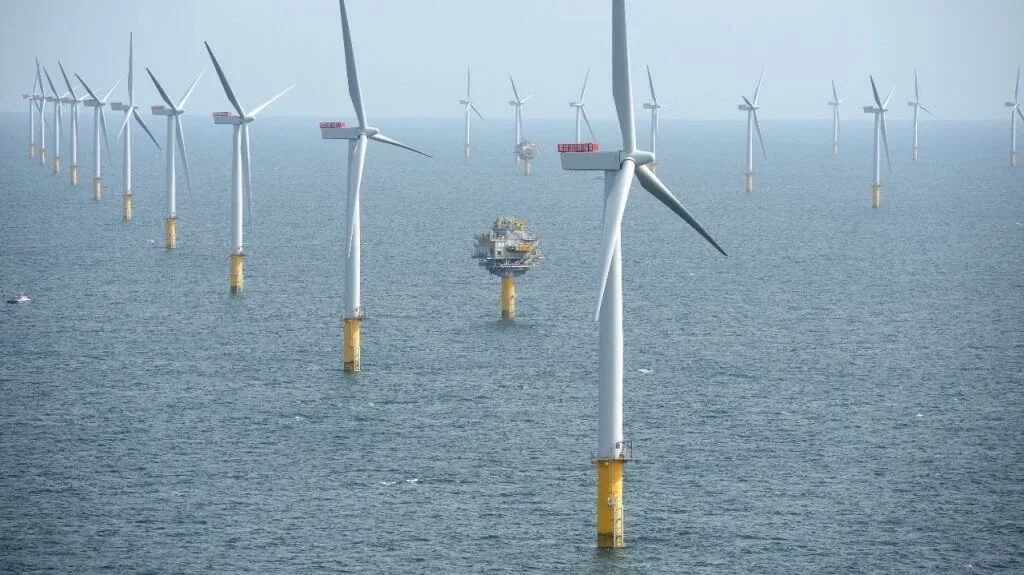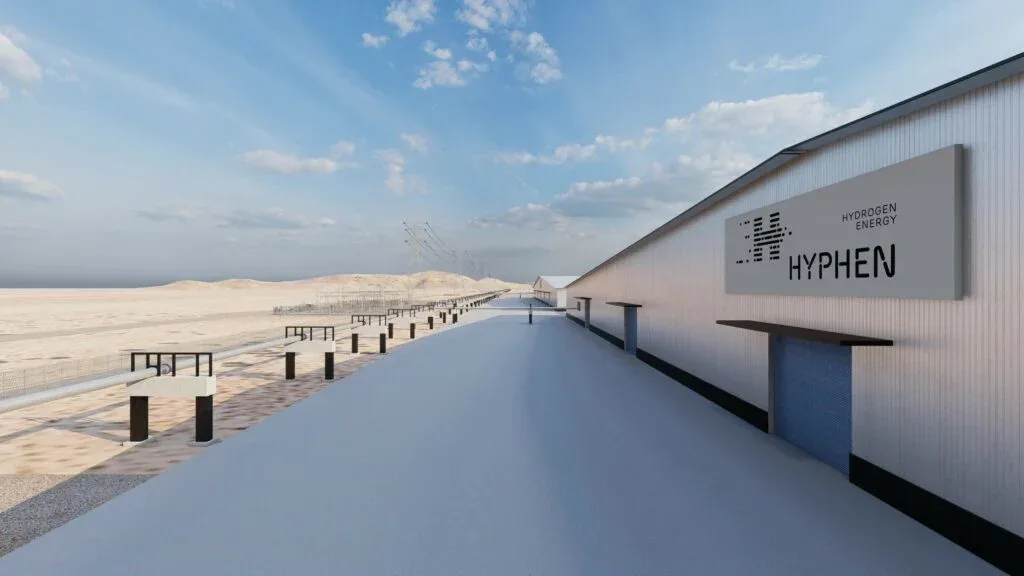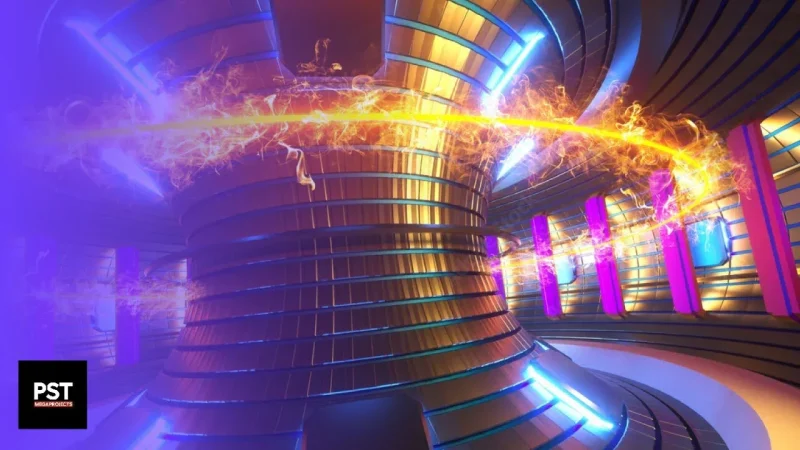Generations young and old have been confronted with the threat of an energy crisis. With this threat constantly hanging over our heads, the world has been pushed towards green energy, leading to the emergence of incredible energy megaprojects all over the world.
Some projects aim to recreate the sun, while others are capitalizing on wind energy with hundreds of wind turbines in the middle of the sea. If successful, these projects under development in 2024 could revolutionize the way we see energy and make the phrase “energy crises” a thing of the past.
Largest Nuclear Fusion Reactor

The goal of the International Thermonuclear Experimental Reactor, or ITER for short, is to be no less than an unlimited source of energy in France.
We’re all familiar with nuclear reactors as a source of renewable energy; there are currently around 436 reactors worldwide. These reactors are based on nuclear fission, a reaction that releases an immense amount of energy. But ITER is nowhere near close to conventional reactors. This is because it will produce energy via the process of nuclear fusion, a reaction that’s 1,000 times more powerful and is found only at the heart of the sun.
To put this in perspective, it’s estimated that for the plant to work, it will need a temperature of around 150 million Celsius; this is ten times hotter than the core of the sun. That’s why humanity hasn’t yet been able to replicate nuclear fusion on Earth artificially. There have been some recent experiments with nuclear fusion, but so far, they have only been able to produce a small amount of energy compared to the energy required to activate the reactor.
The goal of ITER, on the other hand, is a tenfold return on the energy used in the reactor; it will be the first of its kind.
Given that, it is not surprising that it will probably be the largest and most complex engineering project in history by the time it’s finished. Indeed, the reactor will feature millions of components, weighing a total of 23,000 tons. Around 3,000 tons of these will be superconducting magnets, which will be connected by 200km of superconducting cables. All of that must be kept at the extremely low temperature of -269 Celsius.
The magnets are needed because an essential part of the process will be heating up hydrogen atoms with strong electromagnetic waves, much like how your microwaves heat up things, but at a mind-numbingly bigger scale.
At this point, The project must definitely raise some safety concerns. Humanity knows well what happens when things go wrong inside a nuclear reactor, which raises the question of what could happen if something were to malfunction inside the world’s most powerful reactor. This is why it is reassuring that ITER will actually be much safer than conventional reactors.
Due to the nature of the physical process behind it, the reaction will stop as soon as air leaks into the reactor, and no harm will be done. Further, nuclear fusion doesn’t produce radioactive waste, so we won’t have to worry about dealing with nuclear waste at any point. This is all the more reason why ITER is such a promising project. Although ITER was first proposed in 1985, but it suffered setbacks when it came to feasibility and funding.
Now, however, humanity seems more hopeful that a project of this scale is within reach. ITER is now under active development in Southern France as a collaboration between multiple countries, including China, the US, and Japan. The total cost of this endeavor is projected to exceed $22 billion. The first phase of testing is set to begin in 2025, with the expectation that the reactor will be able to produce the expected amount of energy by 2035.
World’s Largest Wind Farm

When thinking of wind energy, many people might picture a few wind turbines scattered around the desert. While such a picture could accurately match the reality of many small wind farms around the world, it’s certainly nowhere near close to an accurate depiction of the UK’s Dogger Bank Wind Farm, which is the largest in the world.
Unlike what you initially picture when you hear of a wind farm, the UK’s Dogger Bank Wind Farm is actually being built in the middle of the sea.
Dogger Bank is a sandbank in the North Sea spanning the waters of several European countries, including Germany and the Netherlands. The wind farm is currently being built there in UK waters, roughly 130 km from the shore of Yorkshire.
The construction of this $9 billion megaproject originally began in 2010, with the expectation that the whole project will be finished by 2026. The wind farm is divided into three main areas: A, B, and C; each area is a separate project phase
The farm will span a total of approximately 1,700 km2, more or less equally divided across the three main areas. Despite not yet being fully developed, it has already started supplying energy, and by the time it’s finished, the 277 wind turbines of the farm will generate 3.6 GW of electricity. This is enough to power 6 million homes, and annually save an amount of CO2 emissions equivalent to that produced by 1.5 million cars.
What makes this project fascinating is its environmental and economic benefits and the many engineering challenges that must be overcome. To take just one example, think of the money and effort involved in installing 130 km-long cables to connect the far-away wind turbines to on-shore energy stations.
It’s worth noting that the UK is not the only country currently interested in making use of the energy provided by the North Sea. Belgium and Denmark, among others, have been interested in similar projects.
Denmark, for example, has announced plans to build two ‘energy islands.’ These will be two artificial islands built at the center of a wind farm similar to the one built by the UK. The two islands are expected to have a generation capacity of around 5 to 6GW. The construction process is projected to be finished sometime around 2030, costing Denmark more than $34 billion.
The purpose of having an island in the middle is to eliminate the need to connect the turbines to on-shore points. The islands will also be able to store excess electricity when needed and will feature facilities that can convert electricity into other forms of energy, like renewable hydrogen.
Largest Green Hydrogen Plant

The world has been using hydrogen energy for a long time now. In fact, the first hydrogen-powered engine was first invented in 1804. However, most of our Hydrogen energy is not green or renewable: it’s produced by burning fossil fuels. This is why there has been a lot of interest lately in finding a way to produce green hydrogen efficiently.
There is actually such a way, but, unfortunately, it’s inefficient, as it requires a lot of electricity. Since our goal is clean energy, fossil fuels cannot be used to produce the required electricity. This means that we need a lot of wind energy, solar energy, and hydropower to produce green hydrogen. The challenge is to find the perfect place to build these.
It seems that Namibia, a small African country located in the south, is going to take on that challenge. The country is blessed with a location that makes it perfect for renewable energy stations. For perspective, you’d need to put up three wind turbines in Germany for every wind turbine put up in Namibia, and the same goes for solar panels.
It now makes sense why the country is building the world’s largest green hydrogen plant. The hydrogen plant will span 4,000 km2 and cost approximately $10 billion in investments- equal to Namibia’s entire GDP!
By the time it’s finished in 2030, Hyphen will produce 350,000 tons of green hydrogen per year. Finally, it may be asked why the world is interested in green hydrogen instead of resting content with other forms of renewable energy like wind and solar power.
The simple answer is that while electricity is enough to power our homes, for example, it cannot provide the energy required in heavy industries. This is where green hydrogen comes in. It can also be used to power huge transportation ships. Overall, Namibia seems to be eyeing becoming a future leader in the steadily growing green Hydrogen industry.
Disclaimer
Please visit and read our disclaimer here.









